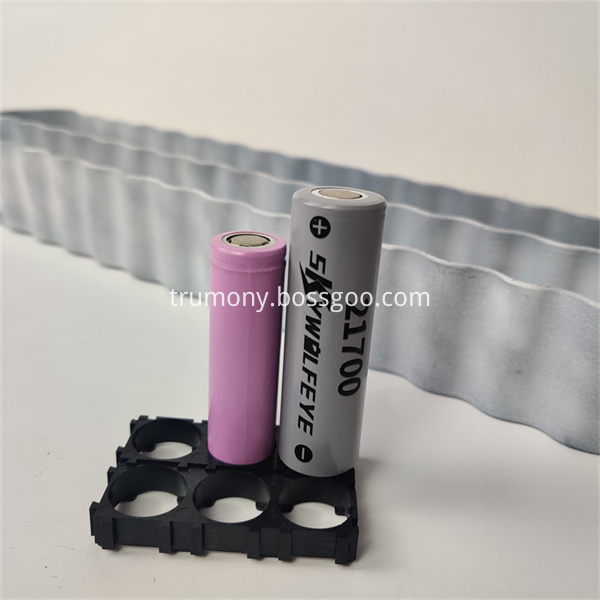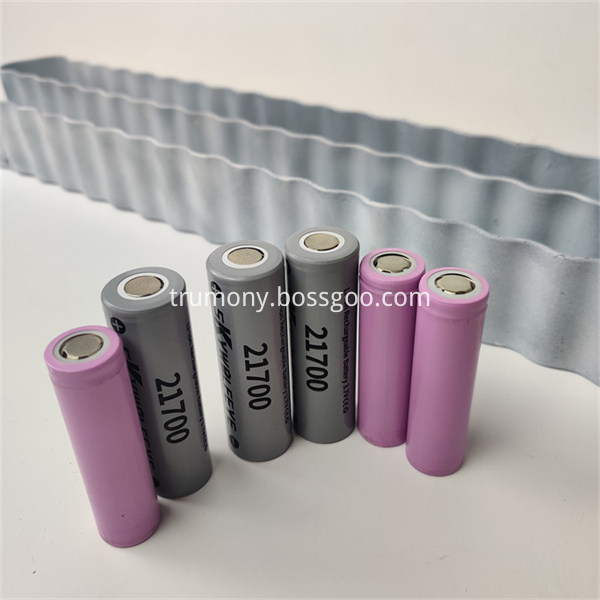The Arctic Circle branch of Norilsk Nickel Metallurgical Company is the northernmost mining and metallurgical industry center in Russia. It has three smelters, 6 and 2 mines beneficiation plant (Norilsk concentrator and the concentrator talnakh Trask).

Figure 1 Positive priority flotation process
Norilsk ore concentrator comprises Norilsk -1 disseminated ore deposits, deposits rich talnakh October Gdansk deposit and disseminated ores and copper ores. The concentrator uses a mixing-separation flotation process with reselection. The Tarnahesk concentrator only processes copper-nickel ore from the October, Taymersk and Scarlister deposits, which uses a priority-mix-separation flotation process (Figure 1). Concentrator obtained product is copper concentrate, nickel ore, iron ore concentrate and pyrrhotite tailings abandoned. The copper concentrate produced by the two concentrators is processed by the company's copper smelter, the nickel concentrate produced by the Norilsk concentrator is processed by the company's nickel smelter, and the nickel concentrate and ferro-ferrite produced by the Tarnahsk concentrator. The ore concentrate is processed by the Najzhinjingsk smelter. In January 1999, the Norilsk Concentrator and the Tarnahsk Concentrator established a Concentrator Production Consortium. In addition to the main workshop, the tailings facility and hydraulic transport are combined into one.
The Norrisk Mining and Metallurgical Company Arctic Circle Branch has its own professional research institute, the Mining and Metallurgical Experimental Research Center. In fact, it is a laboratory, and its main research direction is around the production activities of the branch. In recent years, with the participation of the Mining and Metallurgy Experimental Research Center, a phased work has been carried out on the perfection of the process in the production process of the concentrator, the modernization of the equipment and the transformation of the main workshop. Therefore, in the case of the decline of the quality of the ore and the increasingly complex mineral composition, the efficiency of the entire smelting consortium of the Arctic Circle Branch has been greatly improved, and some ecological and environmental problems have been systematically solved.
Talnakh Minsk October deposits and deposit reserves, high content of useful components, which can be long-term development of two deposits guarantee Norilsk Mining and Metallurgical Company and the North Branch of the Arctic Circle Nickel-ferrous metals and precious metals production growth Demand.
The composition characteristics of the ore of these two deposits have proposed to the ore dressing experts the task of finding an effective treatment of the ore process. More than 90% of the reserves of copper-rich nickel ore in the Tarnahsk and October deposits are variants of pyrrhotite-type minerals. This type of ore is characterized by a high content of pyrrhotite (Fe 1-x S) with a chemical composition of uncertainty (30% to 60%), and the sulfide minerals are closely linked, allowing conventional beneficiation methods, even with modern beneficiation. Methods and a new generation of modifiers are also difficult to separate them. The results show that nickel-bearing pyrite (mainly containing nickel) is closely related to pyrrhotite, and even exists as a solid solution to form nickel-containing pyrrhotite. There are two types of pyrrhotite variants in the ore of the Tarnahsk deposit: hexagonal pyrrhotite (Fe 8 S 9 -Fe 13 S 14 ) and monoclinic pyrrhotite (Fe 7 S 8 ). Moreover, the latter only accounts for 20% of the total. The hexagonal pyrrhotite variant (weak magnetic) present in the Norilsk ore is quite different from the copper-nickel ore processed abroad. Among the copper-nickel ore in Canada, monoclinic pyrrhotite (with ferromagnetism) is common. In the 1970s, Canadian mineral processing experts succeeded in selecting pyrrhotite by electromagnetic selection to obtain highly selective pyrrhotite concentrate.
In addition to the mineral beneficiation close to each other so that fine intergrowth completely apart complex selection process, another important feature is the isomorphous widespread, high platinum group metal content in the ore, pyrrhotite foreign deposit over 2-3 orders of magnitude.
The Tarnahesk Concentrator was commissioned in 1981. The design of the positive priority flotation process was used until 1996 (Figure 1). The process obtained the following two concentrates: 25.9% Cu and Ni>1.5% copper concentrate, copper recovery rate of 73%; nickel concentrate containing 7% Ni, nickel recovery rate of 60%. The concentrate separated at this time is concentrated with a considerable amount of pyrrhotite.
In the late 1980s, the task in front of the ore dressing staff of the Arctic Circle branch of Norilsk Mining and Metallurgical Company was to substantially reduce the amount of iron and sulfur entering the smelting production cycle in order to increase the production of nickel ice copper smelting trucks. Production capacity and reduction of emissions of sulfur dioxide into the atmosphere.
In 1995, 24 sets of ΦПΡ-16 inflatable flotation machines were introduced in the copper flotation plant of the Tarnahesk Concentrator. The removal of 102 ΦΜΡ-6.3 mechanical agitating flotation machines not only greatly reduced operating costs, but also created conditions for further process improvement.
Between 1996 and 1997, new flotation reagents were successfully applied in the nickel flotation circuits of two concentrators: ДМДК (dimethyl dithiocarbamate, inhibitor of low nickel pyrrhotite) and ДП-4 (Auxiliary collector for platinum group metals).
The use of these new agents increases the nickel recovery of commercial nickel concentrates by 10% while increasing the grade of concentrate nickel. The treatment of higher quality nickel concentrates increases the throughput of nickel smelters and reduces the amount of sulphur dioxide emitted by the smelter into the atmosphere. A notable result is an increase in sulfur content of 8% in tailings and an increase in the production of platinum group metals.
In 1998, ДМДК pharmacy was applied in the ferro-flotation flotation circuit of the Tarnahsk concentrator to increase the recovery of iron and sulphur in tailings. The amount of sulphur dioxide released into the atmosphere per year was reduced by 140,000 tons. . At the same time, 12 ΦПМ-40 inflatable flotation machines were introduced in the nickel selection and pyrrhotite selection to replace 52 ΦΜΡ-6.3 mechanical agitation flotation machines.
In 1999, the Tarnahesk concentrator was extensively remodeled, and by 2000, its processing capacity increased by 35%. Part of the rich ore was transferred from the Norilsk Concentrator to the Tarnahesk Concentrator. A new generation of equipment is being applied in the transformation:
1) The US Nordberr HP-700c crusher, which is closed with the screening machine, reduces the particle size of the crushed product from -40 mm to -19 mm.
2) Apply the OK-130TC flotation machine from Outokumpu, Finland.
3) Apply the ПроÑкон-2100 process automation control system.
4) Apply German automatic adjustment of slurry pump and hydrocyclone.
Due to the modification of the concentrator and the application of new equipment, the power consumption of the concentrator is reduced to 7 kWh/t, the nickel recovery rate of nickel concentrate is increased by 2%, the labor productivity is increased to 165%, the transportation cost is reduced, and the metal loss during transportation is 2.5%. Dropped to 0.5%.
In 1999, the Tarnahsk concentrator and the Norilsk concentrator copper concentrate were first selected for the application of sodium bisulfite, which obtained high quality copper concentrate, which greatly reduced the iron and copper entering the copper concentrate. The amount of nickel.
In 2001, the priority-mixing-separation flotation process was used to replace the prioritized flotation process of the original design (Figure 2). The process separates low-nickel pyrrhotite into a separate product, and the low-nickel pyrrhotite product is a raw material for the recovery of platinum group metals. Another advantage of this process is the separation of all gangue minerals into the mixed flotation tailings. This tailings can be used to fill mine goafs. After applying the priority-mixing-separation flotation process, the ore grinding fineness can be reduced from 80%-0.074 mm to 70%-0.074 mm, thus reducing the energy consumption of the grinding workshop.

Figure 2 Priority-mixing-separation flotation process
In the past 10 years, due to the improvement of the beneficiation process, the concentrate quality and useful metal recovery rate of the concentrator have been improved:
1) Nickel concentrate nickel grade increased from 7.02% to 9.60%.
2) Nickel concentrate nickel recovery rate increased from 60.5% to 74.0%.
3) The copper grade of copper concentrate increased by 28.5% from 25.9%, and the nickel content decreased from 1.54% to 1.18%.
In 2003, the copper concentrate regrind process was applied. In 2004, the second selection operation of copper concentrate was increased. The copper recovery rate of copper concentrate was increased by 2%. Nickel and copper in nickel concentrate and pyrrhotite concentrate. Better than better.
In 2004, a new nickel-containing pyrrhotite flotation process was applied, that is, the nickel-containing pyrrhotite separated at different stages of beneficiation was treated differently, and some refractory concentrates were activated by mechanochemical methods. This method can increase the difference in floatability between pentlandite and pyrrhotite. The nickel concentrate grade is increased to 9.6% to 10.0%. It is particularly important that the loss of non-ferrous metals and precious metals does not increase as the quality of the concentrate increases. After applying the new process, the amount of sulfur per ton of nickel concentrate entering the smelter fell to 3.55 tons. This is an important ecological indicator. After the application of the new process in 2005, the amount of sulfur in the nickel concentrate produced by the Tarnahsk Concentrator was 1.4 times lower than in 1996.
Snake tube, also named serpentine tube, one of Cooling Pipe which is using to exchange heat from battery to coolant to cool battery in EV industries.
It`s suitable for cylindrical battery thermal management, such as 18650, 2170,4680,46950... If for 32700 cell cooling, cooling pipe size can be 50~55mm, thickness can be 2~3mm, so all products are all customized, according to customers' battery pack, drawing and thermal data. And we have our R&D team, can provide design service.



High heat transfer coefficient
Fast speed
Good temperature uniformity
More accurate temperature control
water cooling tube,cooling plate for ev battery,cooling plate for prismatic cells
Trumony Aluminum Limited , https://www.szaluminumsheets.com